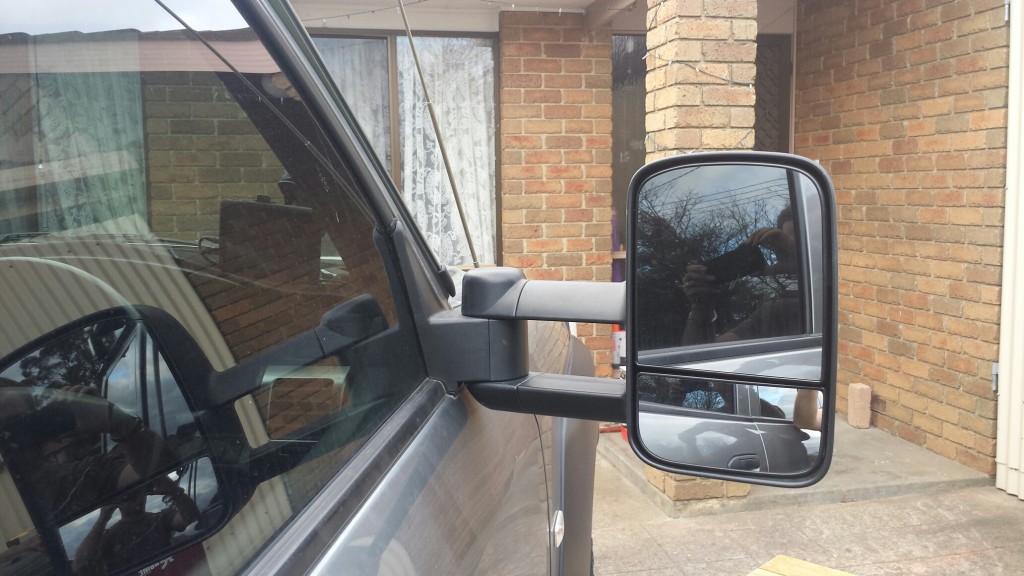
One of the most common questions asked my novice caravanners is “do I need towing mirrors?” If this question is placed on a caravanning forum or Facebook group, the ensuing responses, usually numbering in the hundreds, would confuse anyone posing this question. Most responders would say the answer is yes but a staggering number also argue the opposite and they cite many publications as evidence supporting their claims. The truth is often obscured by these comments, leaving the original poster without a definitive answer. In this article, we hope to put the myth to rest and provide you with a definitive answer.
The first thing we need to do is to establish exactly what the relevant laws are and how they apply to each particular situation. This EXCLUDES many of the towing guides that are published by the various state road authorities. These are guides only and are intended to provide advice that can cover a range of towing configurations, including those that do not require the fitting of mirrors. This is why many of them state that you may be required to fit extension mirrors. Do not rely on the guides. They are not the law.
The overarching law that is applicable to this case is the Vehicle Standard (Australian Design Rule 18/03 Instrumentation) 2006. The Australian Design Rules (ADRs) are national standards for vehicle safety, anti-theft and emissions. The ADRs cover issues such as occupant protection, structures, lighting, noise, engine exhaust emissions, braking and a range of miscellaneous items. They are produced and administered by the Federal Department of Infrastructure and Regional Development. They are made under the Motor Vehicle Standards Act 1989 (the Act). The Act enables the Australian Government to establish nationally uniform standards for road vehicles when they are first supplied to the market in Australia. The Act applies to such vehicles whether they are manufactured in Australia or are imported as new or second hand vehicles.
The Act is Legislation that has been made and enacted by The Parliament of the Commonwealth of Australia. Put simply, it is the law.
In order to register a vehicle, it must comply with the ADRs. Any modifications, alterations or additions to a vehicle, and attaching a caravan is an addition, has the potential to effect the vehicle’s compliance with the ADRs. If a vehicle is non compliant with the ADRs, it is essentially unroadworthy.
Now you can, if you feel the need, read all the relevant ADRs but the one that is applicable in this case is Vehicle Standard (Australian Design Rule 14/02 – Rear Vision Mirrors) 2006 Amendment 1. It states: The field of vision must be such that the driver can see at least a 4 m wide, flat, horizontal portion of the road, which is bounded by a plane parallel to the median longitudinal vertical plane and passing through the outermost point of the vehicle on the driver’s side of the vehicle and extends from 20 m behind the driver’s ocular points to the horizon. In addition, the road must be visible to the driver over a width of 1 m, which is bounded by a plane parallel to the median longitudinal vertical plane and passing through the outermost point of the vehicle starting from a point 4 m behind the vertical plane passing through the driver’s ocular points.
That may sound like a lot of legal mumbo jumbo, and it is, but the diagram below explains what this means:
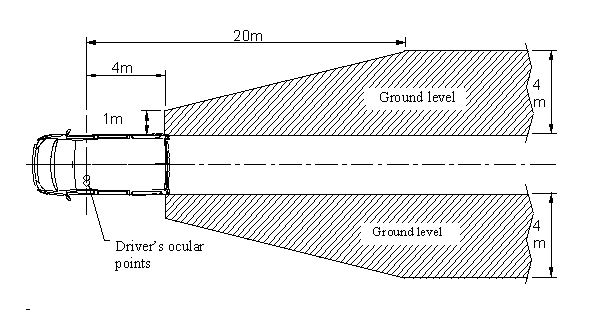
So assuming that your chosen tow vehicle complies with the ADRs, it is your responsibility to maintain that compliance. When you hitch up a caravan, boat or other trailer to your tow vehicle, you potentially block your vision of the area as specified above. If the trailer is no wider than your tow vehicle, then it is likely that your standard mirrors will be sufficient, but if the trailer is wider, and pretty much all caravans are 2.5m wide, then you will need to fit extension mirrors. The following diagram gives a visual representation of what that means:
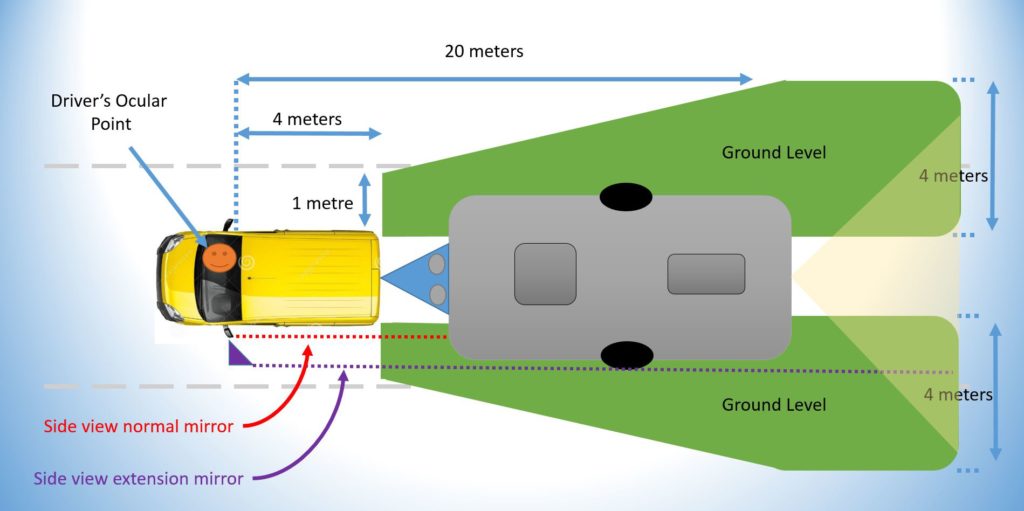
The area in green represents the area of vision that you must maintain. A simple test would be to attached your trailer to your tow vehicle and stand directly behind each of the rearmost corners at a distance of about 20m from your side rear view mirrors. If you can see each mirror in its entirety, then you are likely to be compliant. If the mirrors are partially obscured or completely hidden behind the trailer, then you must install extension mirrors.
Some people will argue that they have a camera fitted on the back of their vans and that it provides the additional area of vision required. This is not the case. As shown above, at best, a camera will show you what is directly behind the trailer and that may actually include some of the green area. What it won’t cover are the areas alongside the trailer and its rear most corners. These are the critical areas that you need to be able to see in order to avoid a collision with another vehicle when changing lanes, merging onto traffic or cornering around a dual lane roundabout.
Now, having been explained all that, many drivers will choose to ignore it and will continue to tow a caravan without fitting extension mirrors to the vehicle. Apart from the obvious safety issues, there is a very high likelihood that they will be pulled over by the Police and issued with an infringement notice. In Victoria, that infringement is 297(2) – fail to have a clear view of the road and traffic, ahead, behind and to each side of the driver RR 297(2) and it will set you back $233. A few drivers who were subjected to safety checks at Newmerella recently were fined for not having mirrors fitted where required. Given the low cost of a good set of towing mirrors, and the likelihood that, in future, there will be an increased focus on towing safety by police, if you avoid just one fine by fitting extension mirrors, they’ll have paid for themselves.
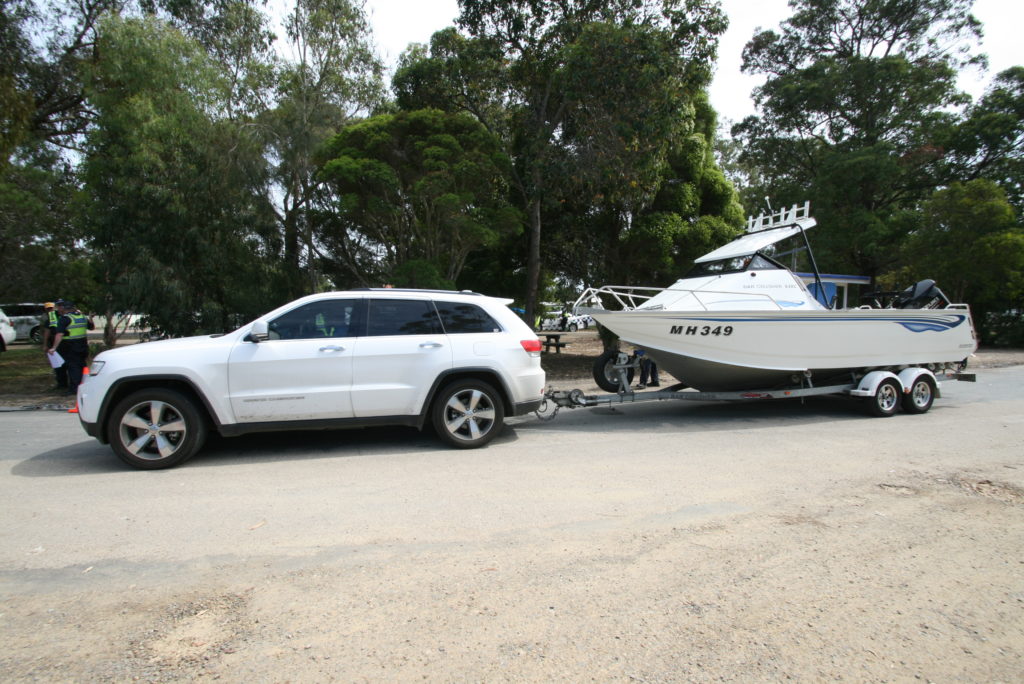

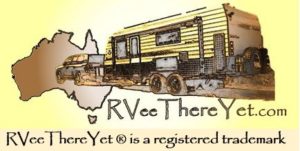
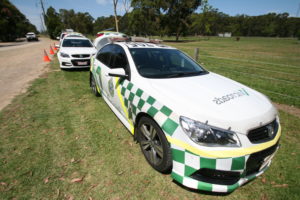

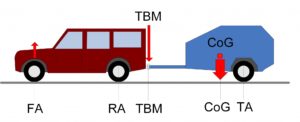
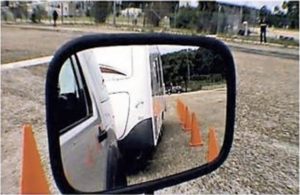
I don’t even caravan, but good read!!
Thanks Emily…!
This article does not adequately address the issue of when you are NOT towing. Some drivers have been cautioned by police that there mirrors are not compliant as they are too wide when in the retracted position when not towing not towing.
Ian…you are absolutely right and thank you for pointing that out.
Yes if you disconnect your trailer from the tow vehicle, lets say when you reach your destination, before you drive off, it is a legal requirement that you MUST remove the extension mirrors (or retract them in the case of Clearview mirrors).